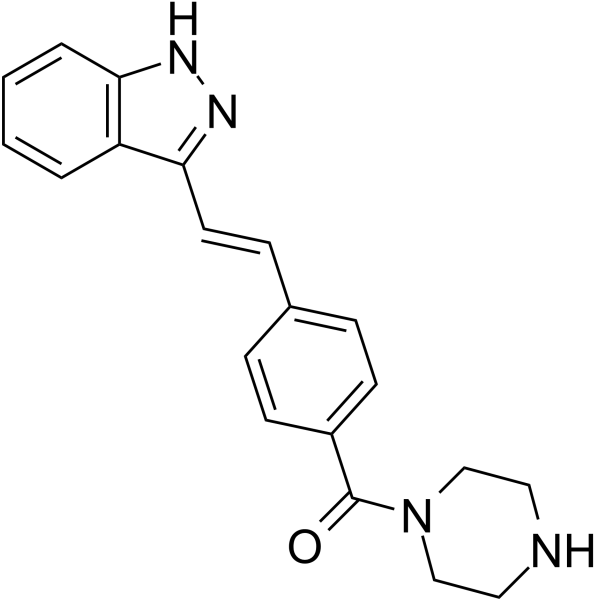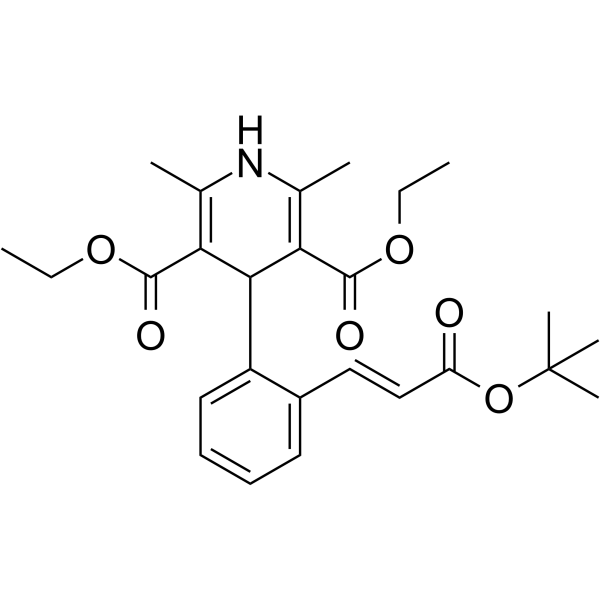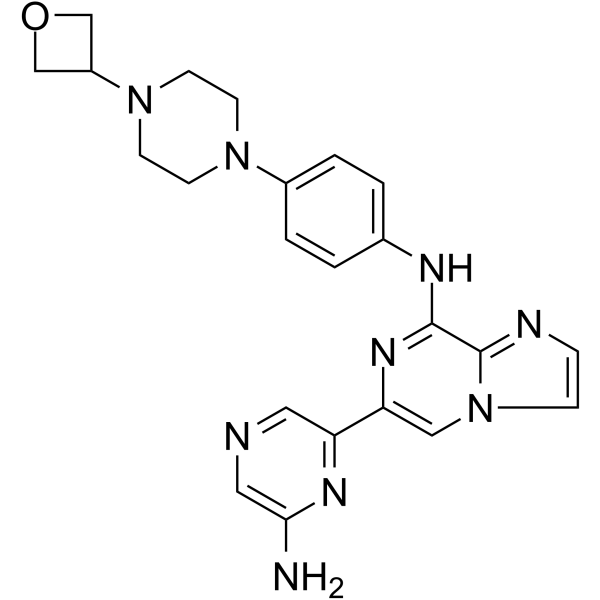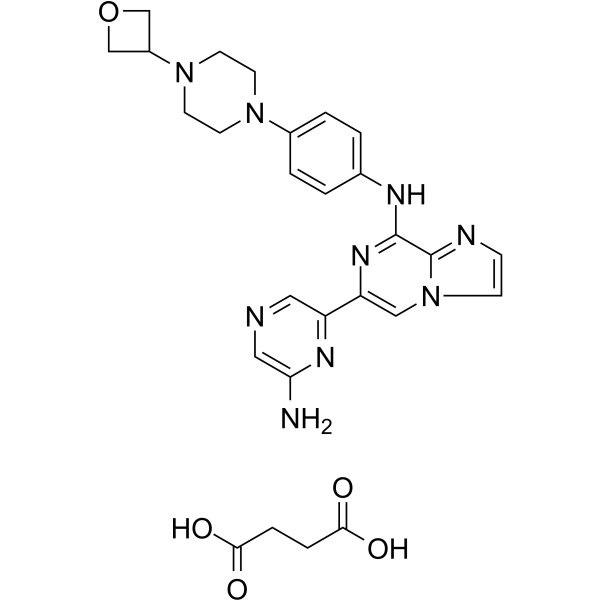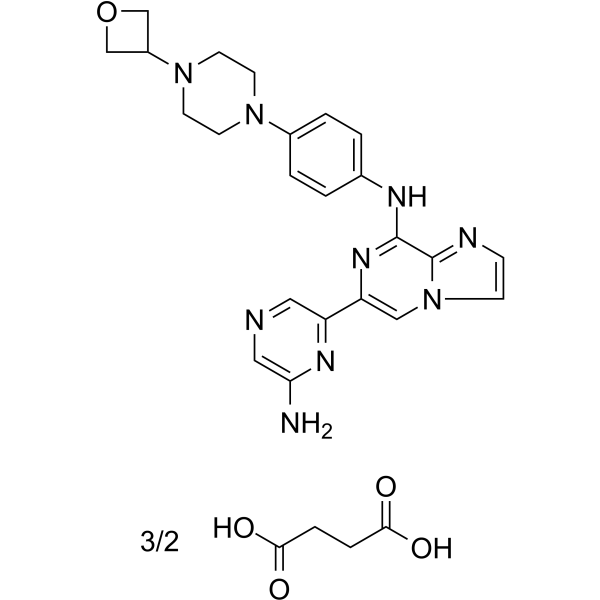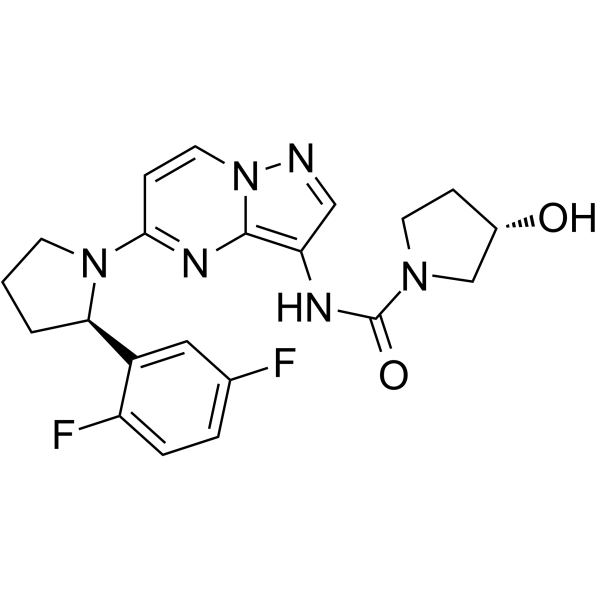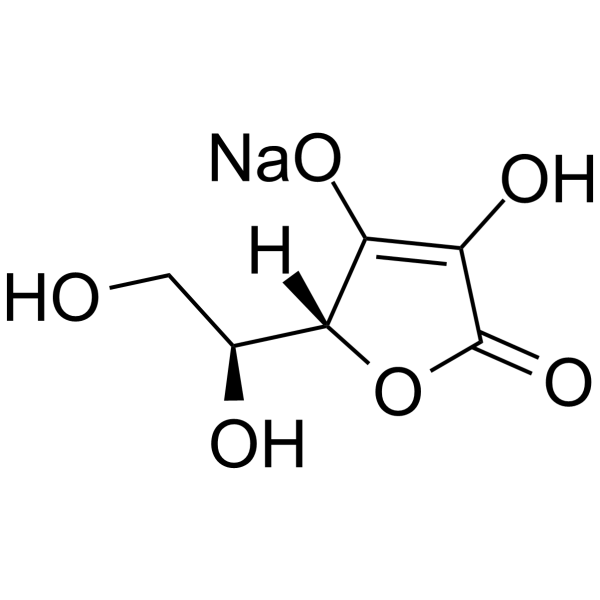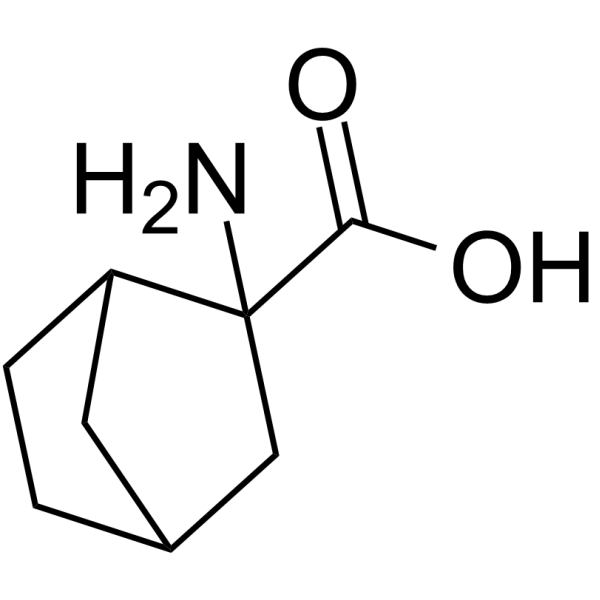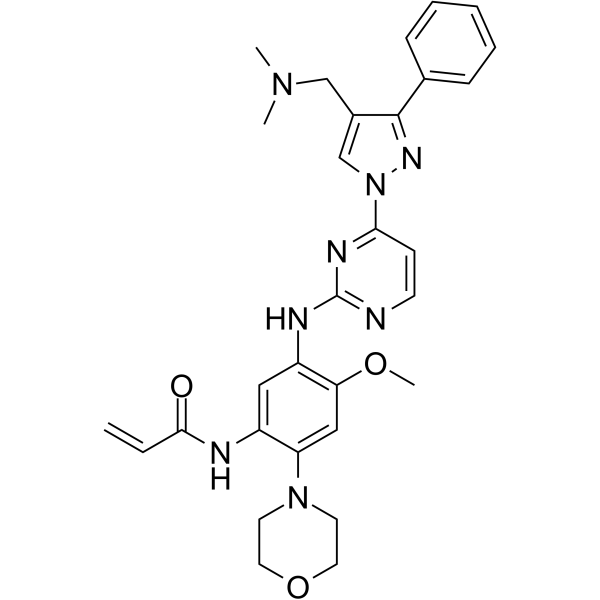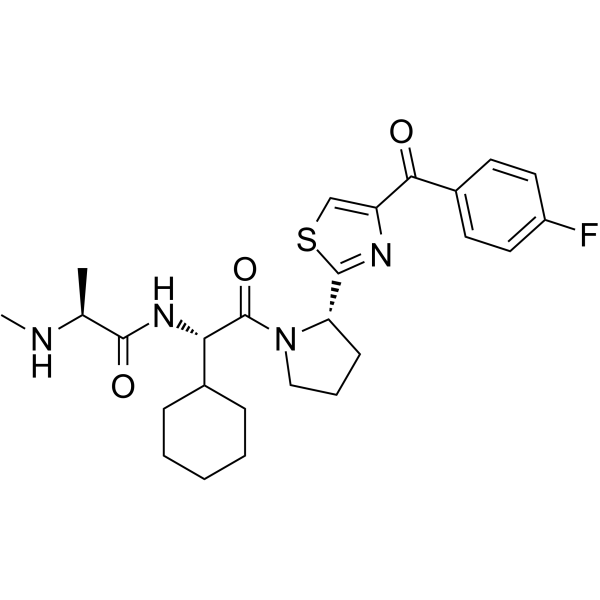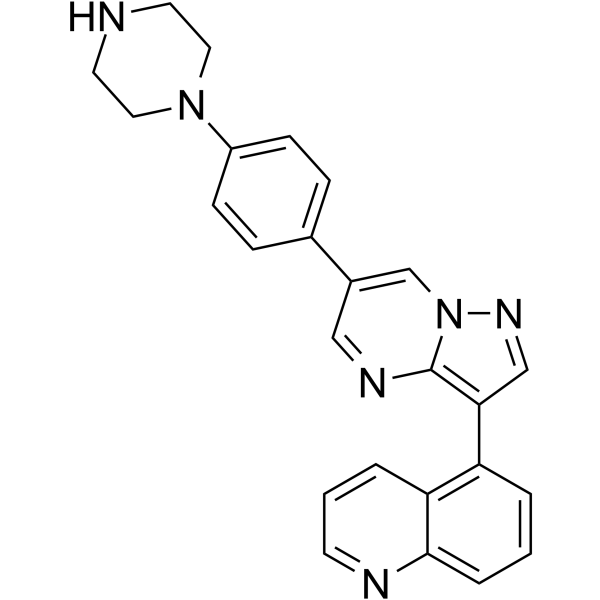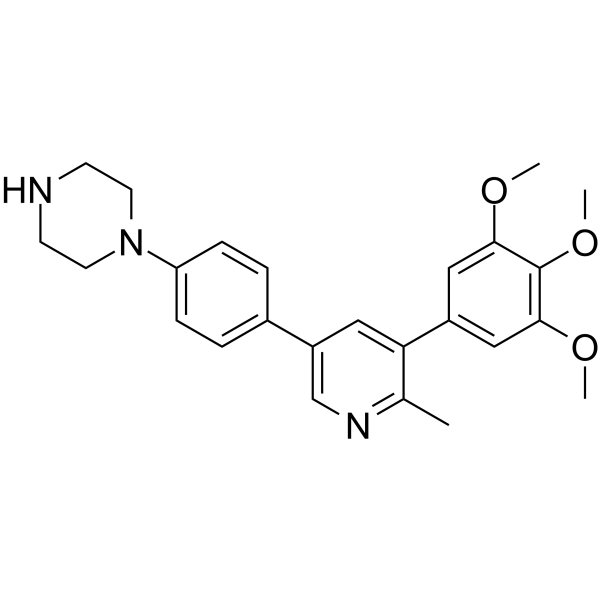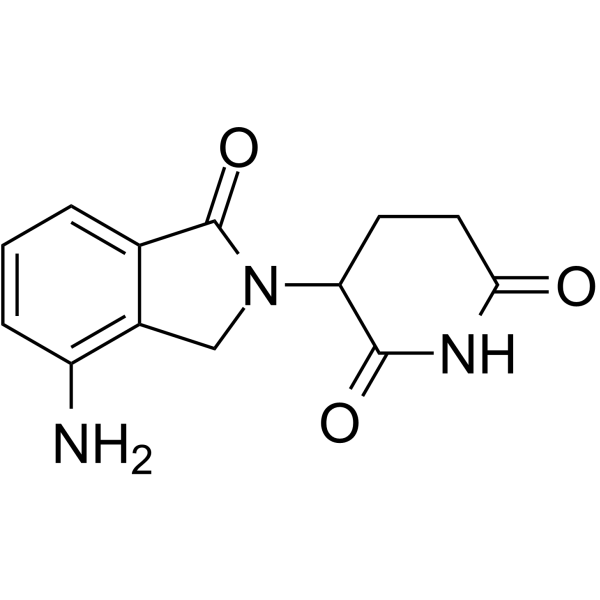|
BP10001
|
KW-2449
|
|
|
|
|
KW-2449 shows growth inhibitory activities against FLT3/ITD-, FLT3/D835Y-, and wt-FLT3/FL-expressing 32D cells, MOLM-13 and MV4;11 with GI50 values of 0.024, 0.046, 0.014, 0.024, and 0.011 μM, respectively. KW-2449 suppresses the phosphorylations of FLT3 (P-FLT3) and its downstream molecule phospho-STAT5 (P-STAT5) in MOLM-13 cells in a dose-dependent manner. KW-2449 increases the percentage of cells in the G1 phase of the cell cycle and reciprocally reduced the percentage of cells in the S phase, resulting in the increase of apoptotic cell population.
|
|
BP10066
|
Lacidipine
|
|
|
|
|
Lacidipine is a lipophilic dihydropyridine calcium antagonist with an intrinsically slow onset of activity. Due to its long duration of action, lacidipine does not lead to reflex tachycardia. It displays specificity in the vascular smooth muscle, where it acts as an antihypertensive agent to dilate peripheral arterioles and reduce blood pressure.
|
|
BP10792
|
Lanraplenib
|
|
|
|
|
Lanraplenib is a highly selective and orally active SYK inhibitor (IC50=9.5 nM) in development for the treatment of inflammatory diseases. Lanraplenib inhibits SYK activity in platelets via the glycoprotein VI (GPVI) receptor without prolonging bleeding time (BT) in monkeys or humans.
|
|
BP10793
|
Lanraplenib monosuccinate
|
|
|
|
|
Lanraplenib monosuccinate inhibits SYK activity in platelets via the glycoprotein VI (GPVI) receptor without prolonging bleeding time (BT) in monkeys or humans. Lanraplenib monosuccinate is a highly selective and orally active SYK inhibitor (IC50=9.5 nM) in development for the treatment of inflammatory diseases.
|
|
BP10794
|
Lanraplenib succinate
|
|
|
|
|
Lanraplenib succinate inhibits SYK activity in platelets via the glycoprotein VI (GPVI) receptor without prolonging bleeding time (BT) in monkeys or humans. Lanraplenib succinate is a highly selective and orally active SYK inhibitor (IC50=9.5 nM) in development for the treatment of inflammatory diseases.
|
|
BP10947
|
Lansiumarin C
|
|
|
|
|
Lansiumarin C can decrease nitric oxide (NO) and tumor necrosis factor-α (TNF-α) production in lipopolysaccharide (LPS)-induced macrophages.
|
|
BP10252
|
Larotrectinib
|
|
|
|
|
Larotrectinib is an orally administered inhibitor of the TRK kinase and is highly selective only for the TRK family of receptors(IC50s = 2-20 nM).
|
|
BP10395
|
L-Ascorbic acid sodium salt
|
|
|
|
|
Sodium Ascorbate is a more bioavailable form of vitamin C that is an alternative to taking ascorbic acid as a supplement.
|
|
BP10943
|
LAT1-IN-1
|
|
|
|
|
LAT1-IN-1 (BCH) significantly inhibit cellular uptake of amino acids and mTOR phosphorylation, which induces the suppression of cancer growth and apoptosis. is a selective and competitive inhibitor of large neutral amino acid transporter 1 (LAT1).
|
|
BP10023
|
Latifolin
|
|
|
|
|
Latifolin is a strong DPPH-scavenger, it attenuates inflammatory responses by inhibiting NF-κB activation via Nrf2-mediated heme oxygenase-1 expression. Latifolin displays potent anticarcinogenic phase II marker enzyme, quinone reductase (QR) inducing activity and high chemopreventive indices. Latifolin also shows antifungal activity against white- and brown-rot fungi.
|
|
BP10304
|
lavendustin A
|
|
|
|
|
lavendustin A is a potent, cell-permeable inhibitor of epidermal growth factor receptor (EGFR) tyrosine kinase.
|
|
BP10305
|
lavendustin C
|
|
|
|
|
Lavendustin C is a potent inhibitor of epidermal growth factor (EGF) receptor-associated tyrosine kinase.
|
|
BP10867
|
Lazertinib
|
|
|
|
|
Lazertinib is an effective, highly mutant-selective and irreversible EGFR-TKI with IC50 values of 1.7 nM, 2 nM, 5 nM, 20.6 nM and 76 nM for Del19/T790M, L858R/T790M, Del19, L85R and Wild type EGFR respectively.
|
|
BP10908
|
LCB 03-0110 dihydrochloride
|
|
|
|
|
LCB 03-0110 Dihydrochloride is a potent inhibitor of the c-Src kinase (IC50 = 1.3 nM) and tyrosine kinases in the BTK and SYK family, as well as in the DDR2 family. It inhibits LPS-induced activation of macrophages and TGF-β1-induced activation of fibroblasts in vitro, inhibits activation of macrophages and fibroblasts, and inhibits scarring in wound healing models.
|
|
BP10007
|
LCL161
|
|
|
|
|
LCL161, a SMAC mimetic, effectivity binds to and inhibits multiple IAPs (i.e. XIAP, c-IAP).
|
|
BP10108
|
LDC000067
|
|
|
|
|
LDC000067 is a highly specific and selective CDK9 inhibitor with an IC50 value of 44±10 nM.
|
|
BP10531
|
LDN-212854
|
|
|
|
|
LDN-212854, a novel BMP inhibitor, exhibits greater selectivity for BMP versus the TGF-β type I receptors; possesses differences towards ALK2(IC50=1.3 nM) versus ALK1/3 compared to other inhibitors.
|
|
BP10694
|
LDN-214117
|
|
|
|
|
LDN-214117 is a potent and selective ALK2 inhibitor.
|
|
BP10876
|
Lenalidomide
|
|
|
|
|
Lenalidomide is a potent inhibitor of TNF-α that, at 10 μM, alters gene expression and cell viability in a range of cancer cell lines.
|
|
BP10787
|
Leucodin
|
|
|
|
|
Leucodin shows high anti-hypercholesterolemic potential. Leucodin may have anti-allergic activity, it shows a potent inhibitory activity upon the beta-hexosaminidase release from RBL-2H3 cells in a dose-dependent manner with IC50 of 80 microM.
|
